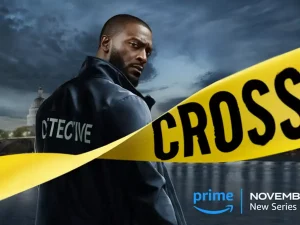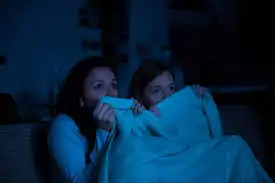Best Horror Movies: A Complete Guide to Spine-Chilling Cinema
Introduction to the Best Horror Movies

The best horror movies capture spectators by mixing terror, suspense, and thrill into unique cinematic experiences. Viewers across generations adore how these films elicit feelings beyond everyday life, providing them a unique retreat. Netflix and other streaming platforms promote new movies, but horror aficionados always hunt for timeless classics that define the genre. Many of these stories draw from human fears, folklore, and paranormal myths, producing narratives that audiences connect with quickly. While many genres fade in popularity, horror films stay evergreen, always finding a way to shock and entertain. Modern directors now blend psychological storytelling with shocking images, ensuring audiences remember the dread long after the credits roll. If you’re searching for good horror movies, this guide will provide you an ultimate list and comprehension of what makes them exceptional. Truly, the Greatest Horror Films are more than entertainment—they’re cultural experiences.
The Evolution of Horror Cinema
Horror cinema has developed greatly from its early roots to modern-day masterpieces. The best horror movies of the silent era used creepy scenery, exaggerated emotions, and terrifying music to upset audiences. Over time, directors extended tactics, bringing realistic makeup, practical effects, and subsequently, revolutionary CGI that boosted fear levels. Audiences still appreciate horror films that combine classic tactics with modern storytelling. Each decade produced something famous, from gothic monsters in the 1930s to slasher antagonists of the 1980s. Today, new movies play with cultural mythologies, folklore, and psychological depth to keep horror fresh. The secret of longevity lies in how these films adapt while maintaining true to fear’s primary attraction. Good horror movies stand out because they don’t just rely on jump scares but also convey unsettling tales. Indeed, the Popular Horror Movies of every age mirror the anxieties and fears of their audiences.
Defining Features of the Best Horror Movies
What makes the best horror movies stand apart from conventional thrillers? The solution rests in several identifying qualities. First, great atmosphere establishes the tone, whether through creepy music, unnerving silence, or dark cinematography. Many horror films use these methods to induce dread long before anything terrible occurs. Second, memorable opponents give lasting horror, from supernatural demons to deranged humans. Third, emotional relatability plays a key role—characters must feel real for spectators to care about their destiny. Additionally, new movies now mix cultural myths and social commentary, making their plots deeper and more compelling. The use of suspenseful pacing also remains crucial, ensuring every scene builds tension intelligently. Viewers also like good horror movies that avoid predictability, keeping them guessing until the very end. These approaches ensure Hit Horror Films leave unforgettable marks on spectators and often inspire future filmmakers.
Iconic Classics That Defined Horror
The finest horror movies list cannot disregard the historic masterpieces that shaped the genre. Films like Psycho (1960) and The Exorcist (1973) revolutionized how people experienced fear in movies. Audiences admired these horror flicks for their innovative storytelling and remarkable execution. Classic vampire tales like Dracula and werewolf legends established archetypes that continue inspiring contemporary movies today. Alfred Hitchcock and William Friedkin, among others, set standards filmmakers today follow. These masterpieces remain good horror movies because they give everlasting lessons in suspense and storytelling. Their evocative images and passionate performances ensure they remain unforgettable throughout generations. Without these trailblazers, the Greatest Horror Films of today wouldn’t exist. They not only entertained but also defied censorship, demonstrating horror as a respected and powerful genre. Each great classic continues to inspire Popular Horror Movies, making horror an enduring cultural force throughout decades.
Modern Horror: A Blend of Old and New
The best horror movies today succeed because they merge conventional storytelling with current inventiveness. Directors study the works of older masters while adding cutting-edge technology and creative ideas. Many current horror films feature slow-burn plots, psychological depth, and nuanced characters instead of depending purely on gore. Streaming platforms like Netflix have made new movies instantly accessible, giving global audiences fresh horrors at their fingertips. These platforms also stimulate innovation, leading to varied and inclusive storytelling. Despite these current advancements, good horror movies still rely on the same essential principle: evoking terror. What changes is the method—more focus on realism, atmosphere, and understandable human fears. Some Hit Horror Films also tackle societal themes, such as racism, inequality, and trauma, utilizing horror as metaphor. This blend ensures the genre remains fresh, guaranteeing fans always find something horrifying and thought-provoking.

Subgenres That Define Horror
The best horror movies span various subgenres, each giving unique tastes of fear. Supernatural horror introduces ghosts, demons, and inexplicable entities that haunt characters. Slasher horror films center on masked killers and horrific murders, typically stressing survival. Meanwhile, psychological horror explores the vulnerability of the human mind, causing dread and unease. New movies typically blend these elements, providing hybrid experiences that keep spectators fascinated. For aficionados who want diversity, creature features and found-footage formats offer fresh chills. Zombie legends remain evergreen, signifying survival against society collapse. Audiences also like good horror movies in anthology formats, where brief pieces give quick, dramatic scares. This variation guarantees the genre appeals to varied preferences. Indeed, Popular Horror Movies reflect the limitless innovation within horror, keeping audiences engaged across generations. No matter the subgenre, the goal remains the same—unforgettable horror and enduring impact.
Why People Love Horror
Audiences continue to watch the best horror movies because they provide safe ways to experience dread. Watching from the comfort of home or theaters, audiences enjoy adrenaline rushes without real danger. This excitement explains the global attraction of horror films, regardless of cultural background. Many individuals adore the unpredictability—anything can happen in these narratives, keeping them invested. Moreover, contemporary movies often replicate real-world worries, bringing catharsis by confronting them symbolically. The fear of isolation, death, or the unknown resonates worldwide. At the same time, good horror movies establish a sense of community, as viewers share comments and discussions. Fear, when experienced together, feels less overwhelming, making horror evenings a pleasant tradition. The Hit Horror Films stand out because they don’t just scare but also entertain, challenge, and comfort audiences. This unusual combination explains why horror continues prospering while other genres often wane.
Streaming Platforms and the Rise of Accessibility
The best horror movies no longer require cinema visits owing to streaming platforms. Platforms like Netflix, Amazon, and Hulu allow rapid access to huge libraries. Fans of horror films can discover everything from classics to indie gems at home. This accessibility also supports new movies, ensuring lesser-known titles reach international viewers. Many filmmakers now release their work straight online, lessening dependence on traditional cinemas. As a result, people discover good horror movies without geographical or distribution limits. The rise of streaming also promotes binge-watching, as fans examine many films in one night. With curated lists, recommendation systems, and tailored suggestions, streaming promises unending horrors. Some Popular Horror Movies become global sensations suddenly thanks to streaming exposure. By bridging the gap between producers and fans, streaming ensures the genre flourishes in today’s digital-first era. Indeed, the modern terror experience is more accessible than ever.
How Horror Impacts Culture
The best horror movies do more than entertain—they shape culture and influence society. Classic titles spurred arguments on censorship, religion, and morality, illustrating cinema’s cultural significance. Modern horror films often hold deeper implications, tackling racism, inequality, or generational trauma through allegory. When new movies like Get Out or Hereditary released, they generated huge discussions about society’s hidden concerns. Beyond the movie, horror impacts fashion, literature, and even music. Iconic masks, clothing, and statements from good horror movies become part of popular culture. Each Halloween, fans recreate sequences, illustrating how deeply these films embed into traditions. Furthermore, Hit Horror Films inspire video games, TV series, and other types of entertainment. Horror becomes a mirror, reflecting society worries while also molding them. Its ability to grow with cultural changes ensures horror remains relevant and potent in every generation.
Conclusion
The best horror movies remain ageless because they brilliantly integrate dread, tension, and storytelling. Audiences globally identify with these films because they trigger primordial emotions, bringing both amusement and catharsis. Classics set the way, while modern horror films innovate via originality and cultural critique. Platforms like Netflix make new movies accessible, ensuring fans can always discover something terrifying. Subgenres, diversity, and developing techniques assure that the genre never remains static. Whether psychological, supernatural, or slasher, good horror movies resonate because they merge inventiveness with common fears. The Popular Horror Movies of today will inspire tomorrow’s legends, keeping the genre alive for years. Ultimately, horror thrives because it speaks to humanity’s deepest instincts while delivering remarkable cinematic experiences.

Frequently Asked Questions
Q1. What makes the finest horror movies different from other genres?
The best horror movies stand out because they combine atmosphere, suspense, and fear to generate strong emotional reactions. While action pictures excite and dramas move audiences, horror provides adrenaline-filled experiences. Directors skillfully mix sound, imagery, and storytelling to keep audiences uneasy. Strong character development makes dread more relatable, ensuring audiences feel invested in the outcome. Great horror also examines universal concerns like death, loneliness, or the unknown. This connection assures longevity. Classics like The Exorcist and Halloween stay timeless because they handle common human anxieties. Modern horror pushes limits by merging genres, adding psychological or social commentary. Unlike predictable thrillers, good horror movies always evolve. Streaming platforms further diversify what’s available, bringing fans new movies every week. Ultimately, the greatest horror films flourish because they blend fright with emotional connection, leaving enduring imprints.
Q2. Why do people keep viewing horror films despite the fear?
People adore horror films because they offer safe locations to feel dread without genuine risk. The adrenaline rush causes excitement, akin to roller coaster rides. Watching the best horror movies allows individuals to approach phobias indirectly, which frequently feels therapeutic. Many viewers like the uncertainty, as horror means nothing can be taken for granted. With new movies released often, audiences always have fresh experiences to appreciate. Additionally, good horror movies draw communities together, as people bond over shared horrors. Fear faced in groups is less daunting and often becomes entertaining. Horror films also reflect societal worries, allowing audiences to handle real-world situations symbolically. For example, zombie tales commonly reflect societal breakdown or pandemics. Ultimately, fans keep returning because horror blends fear with excitement, giving unique entertainment unrivaled by other genres.
Q3. Which classic horror films inspired the present genre?
Several classics revolutionized horror and set norms for modern cinema. Psycho by Alfred Hitchcock incorporated psychological horror aspects, making commonplace surroundings scary. The Exorcist startled moviegoers with its powerful portrayal of possession, confirming supernatural horror’s dominance. Other films like Night of the Living Dead developed zombie subgenres, generating countless new movies and TV shows. Halloween created famous slasher antagonists, creating templates for subsequent series. These oldies remain good horror movies because they mix storytelling with powerful scares. Their influence stretches well beyond movies, shaping video games, literature, and cultural customs like Halloween. The finest horror films don’t only frighten—they also challenge society standards and stimulate innovation. Every decade afterward has added its own milestones, but these pioneers remain unforgettable foundations. Without them, today’s popular horror movies wouldn’t exist.
Q4. How do new horror films differ from earlier ones?
Modern horror films differ from older ones by focusing more on psychological tension, realism, and cultural themes. The best horror movies today generally eschew gratuitous gore, instead stressing atmosphere and real concerns. Streaming services allow new movies to experiment with diverse storytelling, offering fresh cultural myths and unique perspectives. Unlike older masterpieces, today’s films typically confront social themes, such as racism or trauma, using metaphorical horror. Good horror movies still incorporate jump scares but balance them with deeper storytelling. Audiences today anticipate surprises, symbolism, and unpredictability. Technology also plays a part, with enhanced CGI and sound design improving immersion. Yet, despite these changes, horror films remain anchored in the same goal: producing unforgettable fear. Both ancient and contemporary horror share a tradition of delighting while confronting viewers. Ultimately, the finest horror films stay timeless, whether classic or current.
Q5. Why are horror subgenres important?
Horror subgenres ensure variety, allowing the best horror movies to cater to varied preferences. Supernatural horror intrigues with ghosts and devils, while slashers thrill with masked killers. Psychological horror investigates paranoia, making commonplace circumstances unpleasant. New movies often merge subgenres, delivering hybrid experiences that keep spectators engaged. Without these divides, horror could feel repetitious. Instead, successful horror movies give diverse scares customized to individual interests. Zombie features, found-footage experiments, and anthology films further broaden the range. Popular horror movies typically push limits by integrating unexpected themes, such as humor with fear. These subgenres keep the genre new, ensuring it appeals to worldwide audiences throughout generations. Ultimately, the finest horror films thrive because they adapt and grow, reflecting humanity’s limitless inventiveness.
Q6. What impact does streaming play in horror’s popularity?
Streaming services transformed horror by making the best horror movies accessible to worldwide audiences. Platforms like Netflix and Amazon promote horror films ranging from timeless classics to innovative indie ventures. New movies increasingly release straight on streaming, bypassing traditional cinemas. This accessibility allows varied perspectives and tales to reach international fans. Streaming also promotes binge-watching, with users discovering many films in one night. Recommendation algorithms introduce consumers to good horror movies they might not otherwise discover. Popular horror movies often garner cult followings rapidly due to streaming exposure. Independent creators also gain, as streaming provides platforms without expensive distribution hurdles. Overall, streaming ensures horror remains one of the most accessible and thriving genres today.
Q7. Why do horror movies often reflect real-world issues?
The finest horror movies mirror real-world anxieties because they connect more profoundly with audiences. Stories concerning solitude, pandemics, or supernatural punishment typically mirror society’s worries. For example, Get Out exposed racism, while A Quiet Place paralleled worries of societal breakdown. Such tales transform horror films into cultural discourses rather than merely pleasure. By addressing topical topics, good horror movies remain timeless. New movies continue this tradition by adapting to new anxieties like technology, climate change, or pandemics. These layers make fear reverberate more profoundly, transforming shocks into important reflections. Ultimately, horror endures because it changes with society, sustaining cultural relevance across decades.
Q8. How does atmosphere effect horror films?
Atmosphere defines if a horror film actually shocks audiences. The best horror movies master sound, lighting, and pacing to generate dread. A sudden silence might feel as unsettling as loud shouts. Cinematography and location also induce anxiety, making even regular spaces feel ominous. New movies depend mainly on atmosphere rather than gore, assuring deeper immersion. Good horror movies generally emphasis on mood, ensuring suspense builds before key reveals. This strategy keeps audiences captivated, as fear typically rests in expectation. Popular horror movies acquire everlasting success because they perfect this equilibrium. Ultimately, atmosphere elevates a film from forgettable into unforgettable.
Q9. Why do villains matter so much in horror?
Villains inspire the terror in the best horror movies, having lasting cultural repercussions. Characters like Freddy Krueger, Jason Voorhees, and Michael Myers remain iconic decades later. Horror films rely on these adversaries to personify terror, whether supernatural or human. New movies provide modern villains with psychological depth, making them dangerous and relatable. Good horror movies make villains feel unique and memorable, not just generic creatures. Their design, motives, and presence create continual friction. Popular horror movies often become franchises thanks to their villains’ staying power. Without them, horror wouldn’t possess the same cultural influence or long-lasting impact.
Q10. What makes a horror movie timeless?
A horror movie becomes timeless when it blends dread, storytelling, and cultural relevance. The best horror movies blend suspense with emotional relatability, ensuring moviegoers remain committed. Classics like The Exorcist persist because they resonate across generations. Good horror movies innovate without compromising core concepts. New movies become timeless when they approach universal fears with unique insights. Cultural relevance also plays a role, as horror typically reflects society’s fluctuating worries. Popular horror movies stay part of collective memory, referenced in fashion, music, and even holidays. Ultimately, the greatest horror films reach immortality by mixing dread with artistry.
